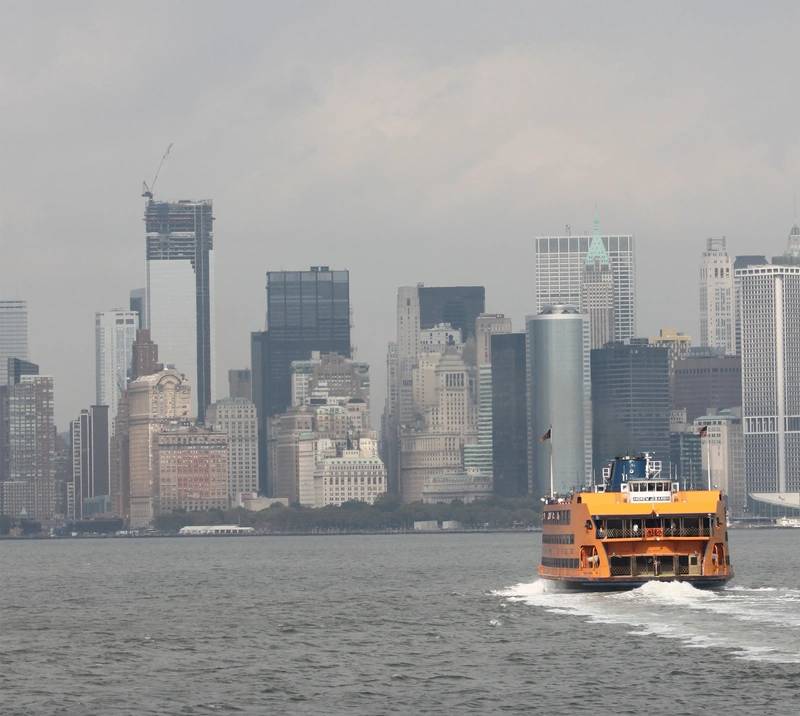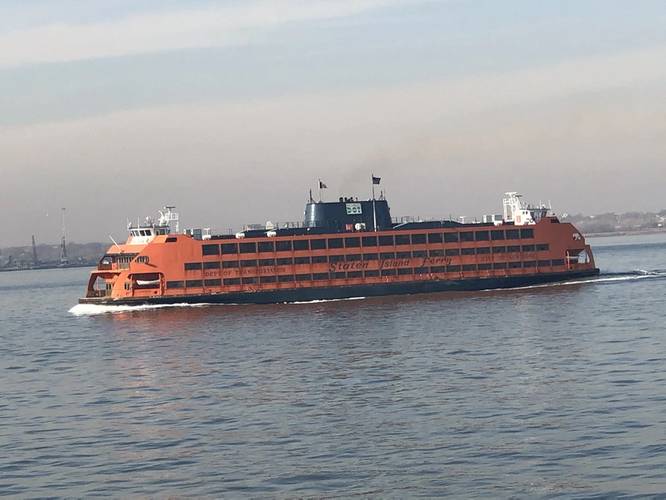Profiles in Training: Staten Island Ferries
When James C. DeSimone, Deputy Commissioner, Ferry Division, New York City Department of Transportation, signed on to run the Staten Island Ferries in 2003, the organization was still in the aftermath of one of the most significant accidents in its history: the ferry Andrew J. Barberi allision of October 2003, an accident which included a number of fatalities and serious injuries. DeSimone, who had long-tenures in both the commercial and public end of the marine business, brought a unique perspective to the organization.
“For the city to go outside the system to hire (me) was huge,” said DeSimone. “At the time, both the mayor and city council had a strong mandate to improve ferry operations, and to make changes in the wake of this accident.”
By the Numbers
The Staten Island Ferry is an iconic part of New York City’s history and future, carrying more than 25.2 million passengers on a 5-mile, 25-minute trip per year, for free, courtesy of about 40,404 trips made annually between Whitehall Street in lower Manhattan to the St. George Ferry Terminal on Staten Island. The system operates eight vessels on the route, from the largest, 5,300-passenger Barberi class vessels (2), down to the smaller 1,100-passenger Austin class vessels (2), with a trio of 4,400-passenger Molinari class vessels; and the 3,000-passenger, 1965-built Kennedy. (There are currently three 4,500-passenger Ollis class ferries under construction, with the first to deliver in the Autumn of 2020).
Helping to ensure the vessels and terminals keep operating 24/7/365 is a workforce of about 650, including 400 vessel personnel; 100 in maintenance covering all trades with the balance in administration and terminal staff.
The Staten Island Ferry is run by the City of New York for one pragmatic reason: To transport Staten Islanders to and from Manhattan. “In the private sector, businesses exist for one purpose: to make a profit … and there’s nothing wrong with that,” said DeSimone. “Government exist to provide services.” The Staten Island Ferry is an iconic part of New York City’s history and future, carrying more than 25.2 million passengers on a 5-mile, 25-minute trip per year, for free, courtesy of about 40,404 trips made annually. Photo: Greg TrauthweinA Time for Change
The Staten Island Ferry is an iconic part of New York City’s history and future, carrying more than 25.2 million passengers on a 5-mile, 25-minute trip per year, for free, courtesy of about 40,404 trips made annually. Photo: Greg TrauthweinA Time for Change
The October 15, 2003 incident provided a wake-up call for the historic ferry service, and DeSimone and his crew set about making changes, from the foundation of a new Safety Management System that took nearly 18 months to devise and implement, to a top to bottom review of maritime training and education.
“When I started here (training) was based on mentoring and shadowing,” said DeSimone. “Since then, all of the training, mentoring and shadowing has been standardized. Today we have three mates that do all of the training for new marine employees to ensure that training is as consistent as we can possibly make it.”
Standardized training for Captains and Assistant Captains is docking in every slip – from Manhattan to Staten Island to the organization’s maintenance piers – on every class of ferry and then signed off on by the captains.
In addition, Staten Island Ferries has worked with Marine Learning Systems on a blended learning program. “John Garvey and I were sitting at a conference presentation given by Murray Goldberg, CEO, Marine Learning Systems, and when he was done John and I looked at each other and said ‘This is exactly what we’re looking for,’” resulting in a new blending training platform for new deckhands and mates.
Staten Island Ferries owns and operates its own simulator, with another due to enter service soon, that is geared toward Bridge Resource Management (BRM) and ECDIS training. It seeks to maximize its training return by, for example, outfitting the new simulator with the actual equipment that will be featured on the newbuilds. It also sends crew to SUNY Maritime for training as needed, with MITAGS carrying the heavier workload for Staten Island captain and assistant captain training courses in and out of the simulator.
“MITAGS has the Navigation Skills Assessment Program (NSAP®), with all of our operating officers participating,” said DeSimone. In today’s world, before anyone gets moved up to an assistant captain or captain, they must complete the NSAP program in addition to evaluations from other captains and administration.
"When it comes to promoting a captain and assessing their skills, human evaluation is subjective and some of that’s ok,” said DeSimone. “But we were looking for a solution that would be as objective as possible.” NSAP, combined with human evaluation, provided the solution.
MarTID 2020: Global Maritime Training Survey is Open
The third annual global Maritime Training Insights Database (MarTID) survey is officially open through February 29, 2020.
Take the MarTID 2020 Survey
To facilitate a broader response globally, the MarTID steering group again opted to both shorten the survey and to offer three, targeted versions for these three stakeholders:
Vessel Operator survey: https://www.surveymonkey.com/r/2020MarTIDOperator
METI survey: https://www.surveymonkey.com/r/2020MarTIDMETI
Seafarer survey: https://www.surveymonkey.com/r/2020MarTIDSeafarer
Why is MarTID Important?
This MarTID initiative is the first of its kind in the world. There is broad agreement that roughly 80% of maritime accidents involve human factors causes. As such, vessel operators and maritime training centers are pouring significant resources into creating best practice and innovative training programs. The MarTID database will grow in breadth and depth annually with your participation, shining a light on the training approaches and successes of global vessel operators and training centers. Insightful, hard-to-get information inside the report include global trends in training budgets, average training amount spent per seafarer and trends in training technologies and training models.
What’s in it for me?
As was the case in the past two surveys, the 2020 survey will be followed by a series of publicly-available reports, broadly published. These reports will provide both high-level and deep-dive information covering both broad trends as well as deep coverage of the 2020 special topic. Although MarTID was founded and run by the three partner organizations, it requires community involvement to succeed. Your participation, approximately 30 minutes of your time, helps to broaden the depth of information.
Vessel owner/operators will have a means to benchmark their own training initiatives.
Maritime training institutions will be able to better gauge future needs.
Seafarers will potentially have a clearer picture of evolving skills requirements.
What is MarTID?
MarTID is a non-commercial, joint initiative of the World Maritime University, Marine Learning Systems and New Wave Media. Its core principles include ethical integrity, objectivity and confidentiality. It was launched in 2018 with the completion of the inaugural survey and publication of the 2018 Training Practices Report, which can be found, along with the 2019 report, at www.MarTID.org.
















